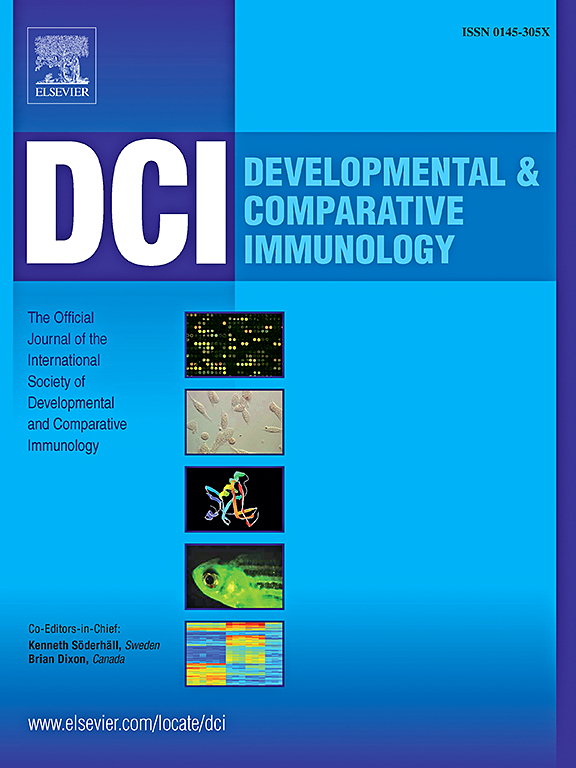EXOC8 of Epinephelus coioides involved in SGIV infection via innate immunity and apoptosis
IF 2.4
3区 农林科学
Q1 FISHERIES
引用次数: 0
Abstract
The exocyst complex (EXOC) plays a major role in the extracellular secretion of organisms. In this study, EXOC8, a member of the EXOC family, was characterized from Epinephelus coioides,an important economical important fish in southern China and Southeast Asia, and its role response to viral infection was explored. The full length of E. coioides EXOC8 is 3091 bp including a 2061 bp open reading frame (ORF) encoding 686 amino acids, with a molecular mass of 79037.42 Da. The mRNA of E. coioides EXOC8 can be detected in all of the tissues examined with different levels. E. coioides EXOC8 is distributed in the cytoplasm. The expression of E. coioides EXOC8 was up-regulated during Singapore grouper iridovirus (SGIV) infection, an important pathogen of E. coioides. Overexpressing E. coioides EXOC8 significantly promoted the formation of cytopathic effects (CPE) caused by SGIV infection and the expressions of SGIV key genes MCP, VP19, LITAF and ICP18; but significantly inhibited the activities of NF-κB/AP-1 promoter, apoptosis induced by SGIV, and the expressions of inflammatory factors (IL-6,IL-8, IL-1β and TNF-α) in E. coioides. The results demonstrated that E. coioides EXOC8 may be involved in SGIV infection, providing a theoretical basis for clearing the mechanisms of viral infection in fish.
石斑鱼EXOC8基因通过先天免疫和细胞凋亡参与SGIV感染。
外囊复合体(EXOC)在生物体的细胞外分泌中起着重要作用。本研究从中国南方和东南亚重要经济鱼类石斑鱼(Epinephelus coioides)中分离出EXOC家族成员EXOC8,并探讨其对病毒感染的应答作用。coioides EXOC8全长3091 bp,包含一个2061 bp的开放阅读框(ORF),编码686个氨基酸,分子量为79037.42 Da。大肠杆菌EXOC8 mRNA在所有组织中均有表达,但表达水平不同。大肠杆菌EXOC8分布于细胞质中。coioides EXOC8在coioides的重要病原体新加坡石斑鱼虹膜病毒(SGIV)感染期间表达上调。过表达大肠杆菌EXOC8可显著促进SGIV感染引起的细胞病变效应(CPE)的形成及SGIV关键基因MCP、VP19、LITAF和ICP18的表达;但显著抑制了NF-κB / AP-1启动子活性、SGIV诱导的细胞凋亡以及炎性因子IL-6、IL-8、IL-1β和TNF-α的表达。结果表明,coioides EXOC8可能参与了SGIV感染,为明确病毒感染鱼类的机制提供了理论依据。
本文章由计算机程序翻译,如有差异,请以英文原文为准。
求助全文
约1分钟内获得全文
求助全文
来源期刊
CiteScore
6.20
自引率
6.90%
发文量
206
审稿时长
49 days
期刊介绍:
Developmental and Comparative Immunology (DCI) is an international journal that publishes articles describing original research in all areas of immunology, including comparative aspects of immunity and the evolution and development of the immune system. Manuscripts describing studies of immune systems in both vertebrates and invertebrates are welcome. All levels of immunological investigations are appropriate: organismal, cellular, biochemical and molecular genetics, extending to such fields as aging of the immune system, interaction between the immune and neuroendocrine system and intestinal immunity.

 求助内容:
求助内容: 应助结果提醒方式:
应助结果提醒方式:


